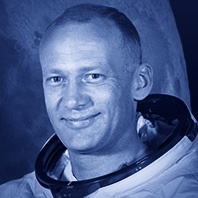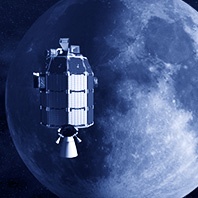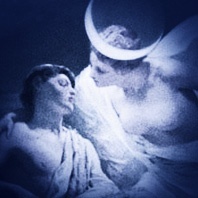Sir Charles Spencer Chaplin (1889–1977) is considered one of the first movie stars ever and made film history with his acting and his works. He is also one of the few artists who managed the transition from silent films to sound films.
Because of using archetypal imagery and symbols in his films, it is natural that the moon could also play a part somewhere. We found four references:
Read more
Does it surprise anyone that the full moon plays a part in the Harry Potter novels, the most popular fantasy stories of these days. This appears to be quite natural midst all the magic. Are there differences between the individual volumes? What other connections are there with the full moon? And: Which of the performers may have possibly been born on the full moon? These questions occupied us and brought forward some astonishing details.
Initially, we searched through the texts of all seven Harry Potter books and counted how often the word »full moon« appeared. We found 13 places altogether.
Read more
It is often said that more children are born at full moon. Meanwhile, many different studies have shown this not to be the case.
An American study from the years 1997–2001, can probably be referred to as a very popular example that investigated the influence of the moon cycle on births. The study was conducted with an impressive amount of 564,039 births and took place over a period of 62 moon cycles. Not only full moon, but also all other phases of the moon cycle were observed with the result that there is no verifiable correlation:
Read more
Buzz Aldrin (* 1930) is an American astronaut and the man, who, as part of the Apollo 11 mission on 21st July 1969, stepped onto the Moon as the second person, just after Neil Armstrong. He stood in the shadow of his colleague and one could assume that he may have suffered under these circumstances. But this was not the case, he did not really want to be in the spotlight and was satisfied coming second. After he set his feet into the dust 20 minutes after Armstrong did, he said: »Beautiful, beautiful. Magnificent desolation.«
Read more
More than 400 years ago, the German artist Adam Elsheimer (1578–1610) painted the picture »Flight into Egypt« (1609), where he depicted the well-known biblical scene of the escape of Joseph and Maria with the Christ Child. The special feature of this painting is, that it shows the full moon and night sky with such a richness of detail on a scale not seen before. Scientists – like for example Dr. Christian Sicka of the ›Deutsche Museum‹ Munich – have examined this work and come to the conclusion that this is possibly the first correct astronomical true to life depiction of the night sky in paintings. One can easily recognise the lunar maria on the Moon’s surface and also the Milky Way, moreover a clear graduation of brightness with the individual stars.
Read more
While the waste problem continues to assume serious dimension on our planet, we find, when examined more closely that people do not only leave trash behind on Earth. Thus, there are tons of scrap metal from satellites and rockets, which circle around the Earth, and also on the deserted Moon there is already a lot of waste that has been left behind by astronauts on their missions. Furthermore, there are countless space probes on the Moon, which were deliberately smashed or landed there, after relevant images and data had been transmitted to Earth. Clearly, it appears to be part of human nature to produce waste and to spread it everywhere on a large scale.
Read more
Google is on everyone’s lips and in our computer oriented world there is probably not a day, where we don’t encounter the name of the US enterprise with its famous search engine in one form or another. We google – this is how the Oxford English Dictionaries have it since 2006.
Google has demonstrated more than once, how to change the world with unconventional ideas. Since 2007, there is a project, which continues this tradition: the »Google Lunar X Prize«.
Read more
The American astronaut David Scott (* 1932) conducted an interesting experiment on the Moon, toward the end of the Apollo 15 mission in July/August 1971. In front of a running camera, he dropped a hammer (2.9 lb) and a falcon’s feather (0.06 lb), just to prove Galileo Galileis’ (1564–1641) thesis that objects fall to the ground with the same speed, regardless of their mass, provided the air resistance does not slow them down, as it is the case on Earth. On our planet, this experiment could only be demonstrated in a vacuum.
Read more
As reported back in September 2013, NASA sent the lunar probe LADEE (short for: Lunar Atmosphere and Dust Environment Explorer) into space, to circle and to explore the Moon. Especially, the formation of ice at the lunar poles has been of great interest. The space probe also collected measurement data of dust particles and gases that are close to the Moon’s surface.
Read more
Peter Bradley Adams is an American singer-songwriter, who has managed amid the flood of commercial songs and loud beats, to tell his own story – with a warm voice and quiet sounds.
His song “Full Moon Song” from 2011 is one of those stories. According to his own statement, this song came to fruition after a short stay in prison (from which he did not break out as stated in the lyrics, but was released on bail). He talks about freedom that now becomes significant to him and makes a new life possible. He wants to see the world through the eyes of a child and experience love without fear of losing something.
Read more
Selene is the Greek moon goddess, she is a daughter of Hyperion and Theia from the Titans, a race of deities. The two siblings of Selene are Eos (the goddess of dawn) and Helios (the god of the sun). These three, forge the bridge between day and night, the Sun and the Moon, masculine and feminine. Later, in Greek mythology, Selene has also been equated with Artemis, just like Apollo is linked with the sun god Helios.
Read more










